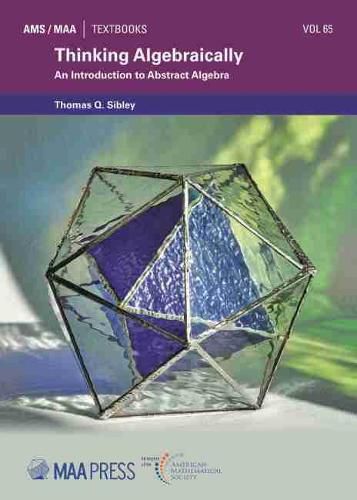Readings Newsletter
Become a Readings Member to make your shopping experience even easier.
Sign in or sign up for free!
You’re not far away from qualifying for FREE standard shipping within Australia
You’ve qualified for FREE standard shipping within Australia
The cart is loading…






Thinking Algebraically presents the insights of abstract algebra in a welcoming and accessible way. It succeeds in combining the advantages of rings-first and groups-first approaches while avoiding the disadvantages. After an historical overview, the first chapter studies familiar examples and elementary properties of groups and rings simultaneously to motivate the modern understanding of algebra. The text builds intuition for abstract algebra starting from high school algebra. In addition to the standard number systems, polynomials, vectors, and matrices, the first chapter introduces modular arithmetic and dihedral groups. The second chapter builds on these basic examples and properties, enabling students to learn structural ideas common to rings and groups: isomorphism, homomorphism, and direct product. The third chapter investigates introductory group theory. Later chapters delve more deeply into groups, rings, and fields, including Galois theory, and they also introduce other topics, such as lattices. The exposition is clear and conversational throughout. The book has numerous exercises in each section as well as supplemental exercises and projects for each chapter. Many examples and well over 100 figures provide support for learning. Short biographies introduce the mathematicians who proved many of the results. The book presents a pathway to algebraic thinking in a semester- or year-long algebra course.
$9.00 standard shipping within Australia
FREE standard shipping within Australia for orders over $100.00
Express & International shipping calculated at checkout
Thinking Algebraically presents the insights of abstract algebra in a welcoming and accessible way. It succeeds in combining the advantages of rings-first and groups-first approaches while avoiding the disadvantages. After an historical overview, the first chapter studies familiar examples and elementary properties of groups and rings simultaneously to motivate the modern understanding of algebra. The text builds intuition for abstract algebra starting from high school algebra. In addition to the standard number systems, polynomials, vectors, and matrices, the first chapter introduces modular arithmetic and dihedral groups. The second chapter builds on these basic examples and properties, enabling students to learn structural ideas common to rings and groups: isomorphism, homomorphism, and direct product. The third chapter investigates introductory group theory. Later chapters delve more deeply into groups, rings, and fields, including Galois theory, and they also introduce other topics, such as lattices. The exposition is clear and conversational throughout. The book has numerous exercises in each section as well as supplemental exercises and projects for each chapter. Many examples and well over 100 figures provide support for learning. Short biographies introduce the mathematicians who proved many of the results. The book presents a pathway to algebraic thinking in a semester- or year-long algebra course.